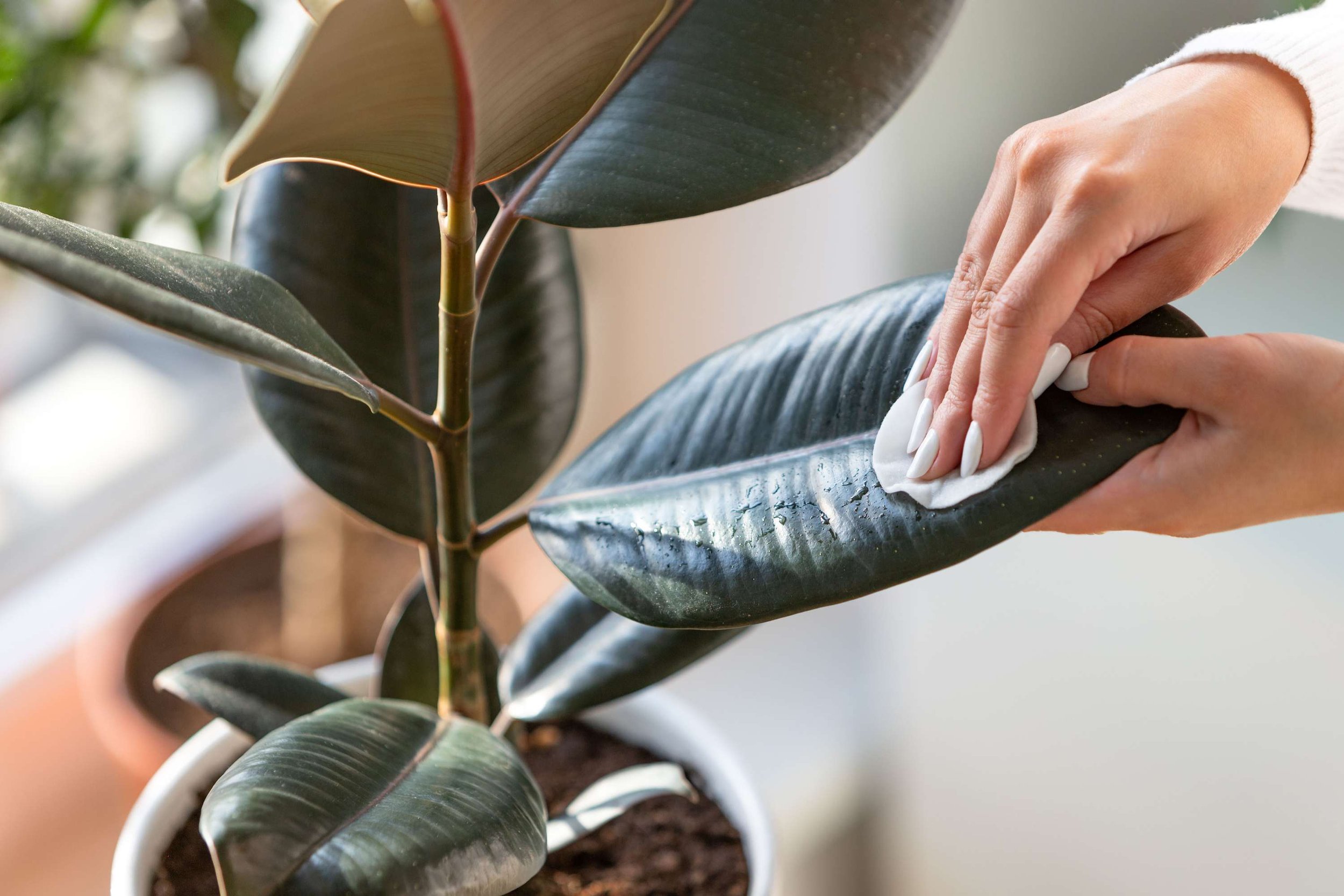Spring cleaning: how to clean your plants
Spring is finally here! Days are getting longer and the air is feeling warmer. As winter retreats, it’s time for some spring cleaning – including your plants.
Dust, grime, and dead foliage can build up on houseplants over time. Beyond looking fresh, a spring clean will make your greenery happier and healthier too. Here’s a simple guide for how (and why) to clean your plants.
Its a great idea to inspect all your plants for pests and necessary cleaning.
Why cleaner plants are healthier plants
One of the most important reasons to keep plants clean is to aid photosynthesis – the process where plants convert carbon dioxide and water from the soil into glucose and oxygen. This is how plants live and grow.
Photosynthesis is powered by energy from the sun. This sun energy is absorbed by chlorophyll, a pigment found in foliage that gives plants their green color. If a plant’s leaves are covered in dirt they won’t be able to absorb as much sunlight – interfering with the process of photosynthesis.
Another good incentive for spring cleaning your indoor plants is to keep bugs and diseases at bay. Healthy plants can fight off pests and infections more easily, and checking for tell-tale signs of unwanted visitors is the best way to avoid plant pests. Plus, your greenery will look better too.
Clean leaves are essential for plants to carry out photosynthesis.
What you’ll need
You don’t need much to get started. Scissors or a sharp knife are handy for removing sad-looking leaves or dead growth. A spray bottle and a compressed air can are useful if you have these. But lukewarm water and a soft cloth are the only essentials.
To begin with, prune drooping leaves and clear dead matter from the soil. If you spot any insects, be sure to keep infested plants away from your other pots – and check out our guide for treating common pests.
A spray bottle is handy for both increasing a plant’s humidity and cleaning.
How to clean your plants
Depending on the size and variety of plant, there are different ways to clean their leaves. For medium to large houseplants, the easiest way to wash their foliage is to spray them in the shower. If the leaves are really dirty they might need to be dunked in a sink full of water.
Smaller and more delicate species might get damaged by the water pressure of a showerhead. For these varieties, spritz the leaves with a mister or spray bottle to clean them up. With big planters that are too heavy to move, simply wipe each leaf with a damp cloth to remove dust and grime.
For plants that prefer dry conditions like cacti and succulents, try removing dirt with a compressed air duster. But don’t worry if you can’t get hold of a compressed air can – giving these plants a spray with a mister will do the trick.
And if you really want to spruce up your houseplants, use soapy water and a stiff brush to scrub any mineral buildup off your containers before repotting your greenery. Now you’re ready to get started on some spring cleaning.
Haven’t got a green thumb? Don’t let that stop you from transforming your office space into an urban jungle. With a Plantclub membership your workplace can enjoy all the benefits of indoor greenery – while we take care of the plants.
Submerging a small plant in water is an easy way to water and clean it.
Plantclub.io provides you and your colleagues with the benefits of plants, wherever you work. Rent office plants and transform your space into a green oasis, with flexible monthly membership options to suit your size. Diversify your employee perks with a dedicated company store, where you can give green gifts and your team can buy plants for their home office. Book a time to chat with us today.





